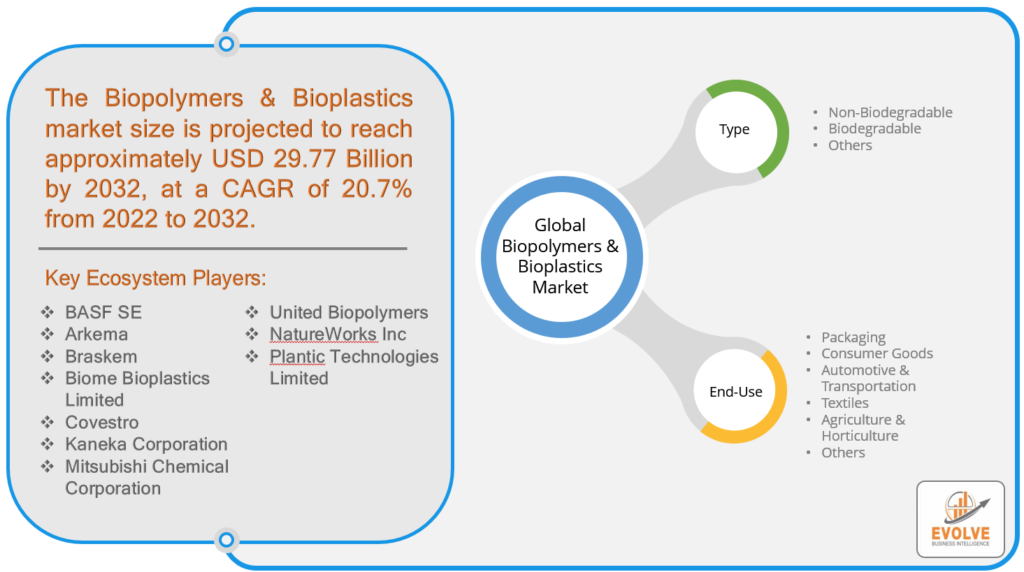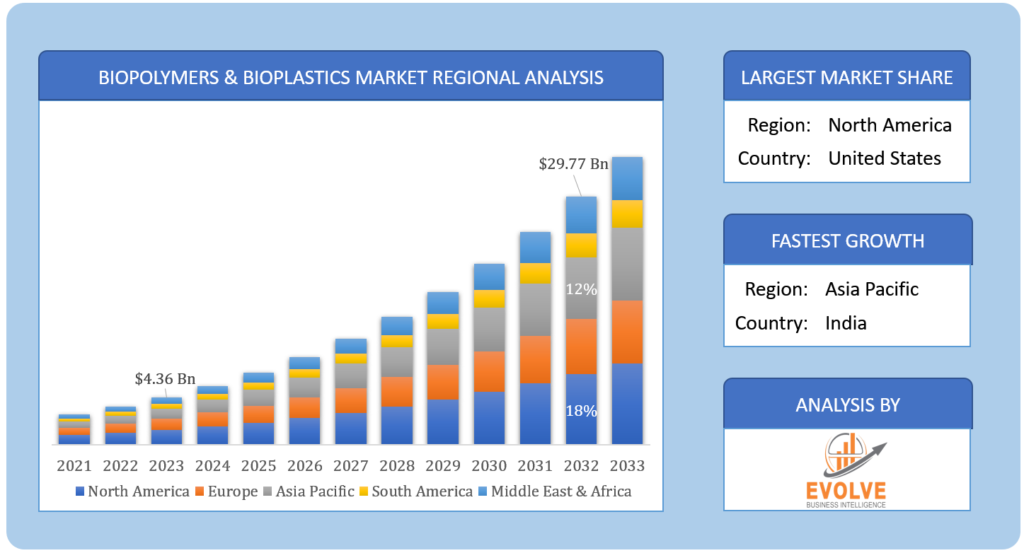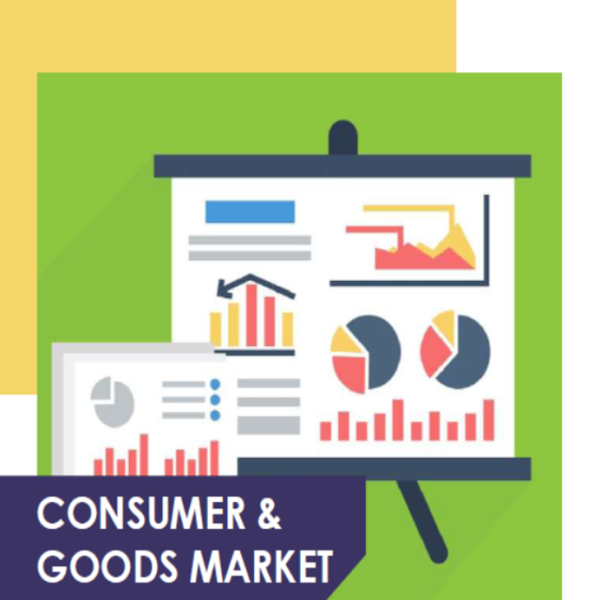The global Biopolymers & Bioplastics market size is projected to reach approximately USD 29.77 Billion by 2032, at a CAGR of 20.7% from 2022 to 2032. Plastic may be molded and created from chemical compounds produced by or derived from microorganisms, such as bacteria or genetically altered plants. Thermoplastics derived from bio-based substances including sugar, starch, and seaweed are known as bioplastics. Biopolymers and bioplastics are widely used in the packaging sector. As a result, bio-based raw materials including starch and vegetable crop waste byproducts are employed to adhere to strict governmental environmental standards. So, compared to typical plastic product manufacturing businesses, product quality is inferior in this sector. Food items may be kept for extended periods without refrigeration and yet retain their chemical qualities when stored in bio-plastics.
COVID-18 Impact Analysis
The COVID-19 pandemic had resulted in strict border controls, and a temporary lockdown, forcing big businesses, governments, and the plastics industry to replenish supply chains. The COVID-19 pandemic is having a significant impact on the social and financial sectors across the world, and all major businesses are suffering difficulties. The coronavirus pandemic has had an uneven effect on the bio-based industry. While some businesses are helping with technical solutions to stop the epidemic, others seem to be witnessing an increase in demand for biodegradable takeout containers.
Biopolymers & Bioplastics market Dynamics
 The market for bioplastics and biopolymers is primarily driven by increasing consumer demand for plastic convenience and quality food products, rising urban population, which increases food adoption, rising processed or stored food and packaged food consumption for consumers, growing disposable income of eatable food, and multifunctionality of packaging.
The market for bioplastics and biopolymers is primarily driven by increasing consumer demand for plastic convenience and quality food products, rising urban population, which increases food adoption, rising processed or stored food and packaged food consumption for consumers, growing disposable income of eatable food, and multifunctionality of packaging.
Drivers:
⮚ Growing consumer demand for plastic convenience products
The increasing consumer demand for plastic convenience products is the primary driver of market growth. The advantages of biopolymers and bioplastics over traditional plastics, such as their renewable nature and biodegradability, are also expected to contribute to market growth. In addition, the growing awareness of the environmental impacts of traditional plastics is expected to drive consumer preference for biopolymers and bioplastics.
Restraint:
- The high cost of bioplastics in comparison to traditional plastic
Bioplastics are made from renewable resources, such as corn starch, and are therefore more environmentally friendly than traditional plastics, which are made from fossil fuels. However, bioplastics are generally more expensive than traditional plastics, which hinders the growth of the bioplastics market.
Opportunity:
⮚ The introduction of new bioplastics and biopolymers product developments
The introduction of new bioplastics and biopolymers product developments creates a prodigious opportunity to market. With the help of new technology, these product developments can be used in many industries and sectors. They are not only eco-friendly but also have the potential to replace traditional plastics and polymers. This can help in reducing the overall environmental impact of the manufacturing process.
Biopolymers & Bioplastics market Segment Overview
Based on the Component, the Biopolymers & Bioplastics market is segmented based on Non-Biodegradable/Bio-Based, Biodegradable, and Others. The biodegradable market is expected to increase rapidly in the next years due to enterprises’ and customers’ reliance on environmentally friendly solutions to suit their everyday demands.
By End-Use
Based on the End-Use, the global Biopolymers & Bioplastics market has been divided into Packaging, Consumer Goods, Automotive & Transportation, Textiles, Agriculture & Horticulture, and Others. The Automotive & Transportation segment is expected to be the fastest-growing market share. This is attributed to the increasing demand for cars and other vehicles, as the need for efficient transportation solutions. This growth will be driven by the increasing demand for cars and other vehicles, as well as the need for efficient transportation solutions.
Global Biopolymers & Bioplastics Market Share, by Segmentation
 Biopolymers & Bioplastics market Regional Analysis
Biopolymers & Bioplastics market Regional Analysis
Based on region, the global Biopolymers & Bioplastics market has been divided into North America, Europe, Asia-Pacific, and the Rest of the World. Asia Pacific is projected to dominate the use of the Biopolymers & Bioplastics market followed by North America.
Asia-Pacific Market
Asia Pacific is the largest market for Biopolymers & Bioplastics, due to the high demand from countries such as China, Japan, and India. In China, the government is promoting the use of bioplastics, as they are considered to be environmentally friendly. In Japan, bioplastics are being used in a wide range of applications, such as food packaging, agriculture, and medical devices. India is also a major market for bioplastics, due to the growing awareness about the environmental benefits of these materials.
North America Market
North America is estimated to rise at the fastest CAGR of the Biopolymers & Bioplastics market. The growth in this region is attributed to the rising demand for bio-based and degradable plastics from the packaging industry. In addition, the growing preference for sustainable and eco-friendly products is another major factor driving the growth of the Biopolymers & Bioplastics market in North America.
Competitive Landscape
The market comprises tier-1, tier-2, and local players. With their wide product portfolios, tier-1 and tier-2 players have a global reach. As for their strategic innovations and broad regional presence, companies such as BASF, Kaneka Corporation, Mitsubishi Chemical Corporation, and United Biopolymers lead the global Biopolymers & Bioplastics business. To increase their market position and attract a wide consumer base, the businesses are employing various strategies, such as growth, product releases, and alliances.
Prominent Players:
- BASF SE
- Arkema
- Braskem
- Biome Bioplastics Limited
- Covestro
- Kaneka Corporation
- Mitsubishi Chemical Corporation
- United Biopolymers
- NatureWorks Inc
- Plantic Technologies Limited
Scope of the Report
Global Biopolymers & Bioplastics Market, by Type
- Non-Biodegradable/Bio-Based
- Biodegradable
- Others
Global Biopolymers & Bioplastics Market, by End-User
- Packaging
- Consumer Goods
- Automotive & Transportation
- Textiles
- Agriculture & Horticulture
- Others
Global Biopolymers & Bioplastics Market, by Region
- North America
- US
- Canada
- Mexico
- Europe
- UK
- Germany
- France
- Italy
- Rest of Europe
- Asia Pacific
- China
- Japan
- South Korea
- India
- Rest of Asia Pacific
- Rest of the World
| Parameters | Indicators |
|---|---|
| Market Size | 2032: $ 29.77 Billion |
| CAGR | 20.7% CAGR (2022-2032) |
| Base year | 2021 |
| Forecast Period | 2020-2032 |
| Historical Data | 2020 |
| Report Coverage | Revenue Forecast, Competitive Landscape, Growth Factors, and Trends |
| Key Segmentations | Type, End-Use |
| Geographies Covered | North America, Europe, Asia-Pacific, Latin America, Middle East, Africa |
| Key Vendors | BASF SE, Arkema, Braskem, Biome Bioplastics Limited, Covestro, Kaneka Corporation, Mitsubishi Chemical Corporation, United Biopolymers, NatureWorks Inc, Plantic Technologies Limited |
| Key Market Opportunities | The introduction of new bioplastics and biopolymers product developments |
| Key Market Drivers | Growing consumer demand for plastic convenience products |
REPORT CONTENT BRIEF:
- High-level analysis of the current and future Biopolymers & Bioplastics market trends and opportunities
- Detailed analysis of current market drivers, restraining factors, and opportunities in the future
- Biopolymers & Bioplastics market historical market size for the year 2020, and forecast from 2021 to 2032
- Biopolymers & Bioplastics market share analysis at each product level
- Competitor analysis with a detailed insight into its product segment, financial strength, and strategies adopted.
- Identifies key strategies adopted including product launches and developments, mergers and acquisitions, joint ventures, collaborations, and partnerships as well as funding taken and investment done, among others.
- To identify and understand the various factors involved in the global Biopolymers & Bioplastics market affected by the pandemic
- To provide a detailed insight into the major companies operating in the market. The profiling will include the financial health of the company’s past 2-3 years with segmental and regional revenue breakup, product offering, recent developments, SWOT analysis, and key strategies.










